Prime Minister of Papua New Guinea facts for kids
Quick facts for kids Prime Minister of the Independent State of Papua New Guinea |
|
|---|---|

|
|
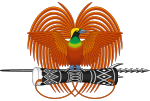
Emblem of Papua New Guinea
|
|
| Style | The Honourable |
| Abbreviation | PM |
| Member of |
|
| Seat | Port Moresby |
| Nominator | National Parliament |
| Appointer | Governor-General |
| Term length | No fixed term length |
| Precursor | Chief Minister of Papua and New Guinea |
| Inaugural holder | Michael Somare |
| Formation | 16 September 1975 |
| Deputy | Deputy Prime Minister of Papua New Guinea |
| Salary | PGK346,037/US$ 97,201 annually (2015) |
| Website | https://pmnec.gov.pg/ |
The Prime Minister of Papua New Guinea (called Prai Minista bilong Papua Niugini in Tok Pisin language) is the main leader of the government in Papua New Guinea. This person is chosen by the country's main law-making group, the National Parliament. After being chosen, they are officially appointed by the Governor-General of Papua New Guinea. The Prime Minister leads their political party, guides the government, and chairs the National Executive Council, which is like the country's main decision-making team.
Contents
How the Prime Minister Is Chosen
The Prime Minister is elected by the National Parliament. Then, the Governor-General officially appoints them. This election usually happens at the very first meeting of Parliament after a big national election.
When a Prime Minister Leaves Office
If the Prime Minister's position becomes empty for any reason, the Speaker of the National Parliament must quickly call a meeting. At this meeting, a new Prime Minister is elected.
The Parliament can also remove a Prime Minister if they pass a "motion of no confidence." This means that most members of Parliament no longer support the Prime Minister. If this happens, the Governor-General must remove the Prime Minister from office. A Prime Minister can also leave office if Parliament decides they are too unwell to do their job, or they can choose to resign on their own.
History of the Role
Before Papua New Guinea gained full independence, the leader of the government was called the Chief Minister. After independence in 1975, the role became known as the Prime Minister.
A Time of Disagreement: 2011–2012 Crisis
Between December 2011 and August 2012, there was a big disagreement over who was the rightful Prime Minister. Two leaders, Peter O'Neill and Sir Michael Somare, both claimed the position. This period is known as the 2011–2012 Papua New Guinean constitutional crisis. Eventually, Sir Michael Somare supported Peter O'Neill, which brought the disagreement to an end.
Where the Prime Minister Works
The main office for the Prime Minister and other important government leaders was first in a place called Konedobu. Soon after Papua New Guinea became independent in 1975, these offices moved to Waigani. Since April 2024, the Prime Minister's Office has been in a new building called Melanesia Haus, which is right across from the National Parliament House.
Leaders of Papua New Guinea (1975–Present)
Here is a list of the people who have served as Prime Minister of Papua New Guinea since 1975.
- Political parties
Pangu Pati (Pangu) People's Progress Party (PPP) People's Democratic Movement (PDM) People's National Congress (PNC) National Alliance Party (NAP)
- Status
Denotes acting prime minister
| No. | Portrait | Name (Birth–Death) |
Election | Term of office | Political party | ||
|---|---|---|---|---|---|---|---|
| Took office | Left office | Time in office | |||||
| 1 | 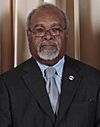 |
Michael Somare (1936–2021) |
1977 | 16 September 1975 | 11 March 1980 | 4 years, 177 days | Pangu |
| 2 | 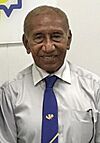 |
Sir Julius Chan (1939–2025) |
— | 11 March 1980 | 2 August 1982 | 2 years, 144 days | PPP |
| (1) | 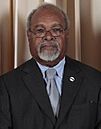 |
Michael Somare (1936–2021) |
1982 | 2 August 1982 | 21 November 1985 | 3 years, 111 days | Pangu |
| 3 | 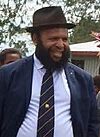 |
Paias Wingti (born 1951) |
1987 | 21 November 1985 | 4 July 1988 | 2 years, 226 days | PDM |
| 4 | 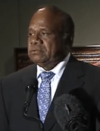 |
Sir Rabbie Namaliu (1947–2023) |
— | 4 July 1988 | 17 July 1992 | 4 years, 13 days | Pangu |
| (3) |  |
Paias Wingti (born 1951) |
1992 | 17 July 1992 | 30 August 1994 | 2 years, 44 days | PDM |
| (2) |  |
Sir Julius Chan (1939–2025) |
— | 30 August 1994 | 27 March 1997 | 2 years, 209 days | PPP |
| 5 |  |
John Giheno (1949–2017) |
— | 27 March 1997 | 2 June 1997 | 67 days | PPP |
| (2) |  |
Sir Julius Chan (1939–2025) |
— | 2 June 1997 | 22 July 1997 | 50 days | PPP |
| 6 | 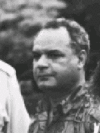 |
Bill Skate (1953–2006) |
1997 | 22 July 1997 | 14 July 1999 | 1 year, 357 days | PNC |
| 7 | 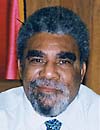 |
Sir Mekere Morauta (1946–2020) |
— | 14 July 1999 | 5 August 2002 | 3 years, 22 days | PDM |
| (1) |  |
Sir Michael Somare (1936–2021) |
2002 2007 |
5 August 2002 | 4 April 2011 | 8 years, 362 days | NAP |
| — | 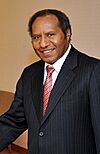 |
Sam Abal (born 1958) (acting) |
— | 13 December 2010 | 17 January 2011 | 35 days | NAP |
| — | 4 April 2011 | 2 August 2011 | 120 days | ||||
| 8 | 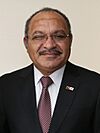 |
Peter O'Neill (born 1965) |
2012 2017 |
2 August 2011 | 29 May 2019 | 7 years, 300 days | PNC |
| 9 | 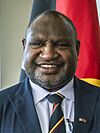 |
James Marape (born 1971) |
2022 | 30 May 2019 | Incumbent | 6 years, 204 days | Pangu |
Timeline of Prime Ministers
This timeline shows how long each Prime Minister of Papua New Guinea lived and when they were in office. The leaders are listed in the order they first became Prime Minister.
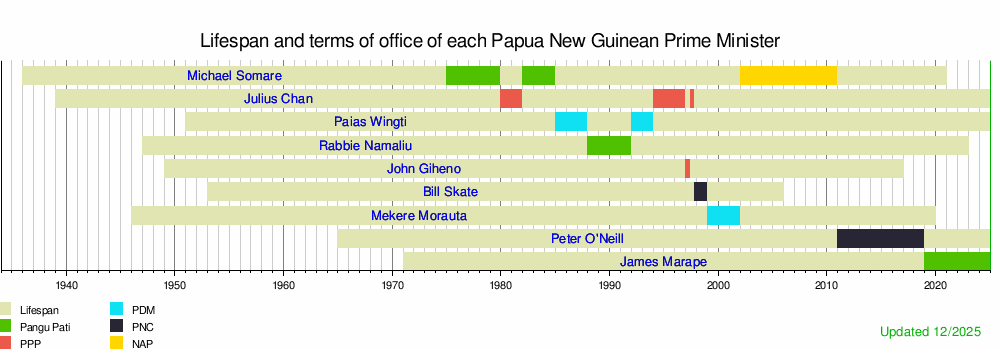
Related Government Roles
See also
 In Spanish: Primer ministro de Papúa Nueva Guinea para niños
In Spanish: Primer ministro de Papúa Nueva Guinea para niños


